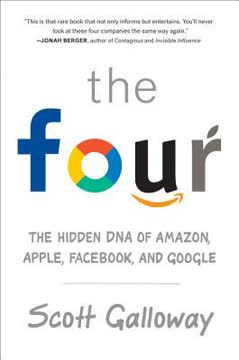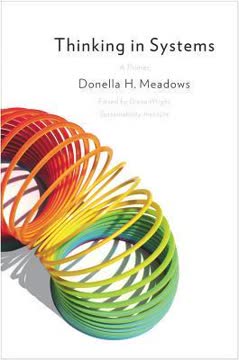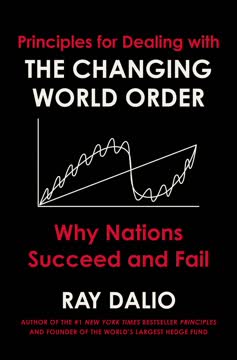Key Takeaways
1. Critical thinking is essential for professional growth and decision-making
Knowing how to think critically is essential for professional growth, especially if you aspire to leadership positions.
Competitive advantage. In today's complex business environment, critical thinking is a crucial skill that separates high-performing professionals from the rest. It enables you to analyze situations from multiple angles, challenge assumptions, and make well-reasoned decisions. Organizations increasingly value employees who can think critically, as they are better equipped to solve complex problems, drive innovation, and adapt to changing circumstances.
Core components. Critical thinking involves several key elements:
- Observing situations objectively
- Asking probing questions
- Analyzing information from diverse sources
- Recognizing biases and limitations in thinking
- Drawing logical conclusions
- Communicating reasoning effectively
By developing these skills, you enhance your ability to navigate ambiguity, make sound judgments, and contribute more meaningfully to your organization's success.
2. Question assumptions and embrace the discomfort of uncertainty
Hold your hypotheses loosely.
Challenge the status quo. Effective critical thinkers are willing to question long-held beliefs and practices, even when it feels uncomfortable. This requires intellectual humility – the ability to admit that your initial thoughts or assumptions may be incorrect. By approaching problems with an open mind, you create space for new insights and innovative solutions to emerge.
Strategies for challenging assumptions:
- Actively seek out information that contradicts your beliefs
- Play devil's advocate with your own ideas
- Ask "What if?" questions to explore alternative possibilities
- Engage in thought experiments to test the validity of assumptions
Embracing uncertainty can be unsettling, but it's a necessary step in developing a more nuanced understanding of complex issues. By cultivating comfort with ambiguity, you become better equipped to navigate the unpredictable nature of today's business landscape.
3. Reframe problems to uncover innovative solutions
Are you solving the right problems?
Shift perspective. Often, the way a problem is initially framed limits the range of possible solutions. By deliberately reframing the issue, you can uncover new approaches and opportunities that were previously hidden. This involves looking at the situation from different angles, considering broader contexts, and challenging the fundamental assumptions underlying the problem statement.
Reframing techniques:
- Zoom out to see the bigger picture
- Break down complex problems into smaller, manageable components
- Consider the problem from various stakeholders' perspectives
- Ask "What's really causing this issue?" to identify root causes
- Explore how the problem might be viewed in different industries or contexts
By mastering the art of reframing, you enhance your ability to find creative solutions to persistent challenges and identify opportunities that others might miss.
4. Ask thoughtful questions to gain deeper understanding
Critical thinking starts with careful questioning.
Power of inquiry. Asking the right questions is fundamental to critical thinking. Thoughtful questions help clarify ambiguities, challenge assumptions, and reveal important information that might otherwise be overlooked. By developing your questioning skills, you can more effectively analyze situations, uncover hidden insights, and guide conversations towards productive outcomes.
Effective questioning strategies:
- Use open-ended questions to encourage elaboration
- Ask "Why?" multiple times to dig deeper into root causes
- Explore hypotheticals to consider potential outcomes
- Seek evidence and examples to support claims
- Question the source and reliability of information
Remember that the goal of questioning is not to prove others wrong, but to gain a more comprehensive understanding of the issue at hand. Approach inquiries with genuine curiosity and a willingness to learn from others' perspectives.
5. Seek diverse perspectives to challenge your thinking
Disagreement doesn't have to be divisive.
Cognitive diversity. Engaging with people who think differently from you is crucial for developing well-rounded perspectives and avoiding groupthink. By actively seeking out diverse viewpoints, you can identify blind spots in your own thinking, challenge your assumptions, and arrive at more robust solutions.
Strategies for incorporating diverse perspectives:
- Build a diverse network of colleagues and mentors
- Engage in cross-functional collaborations
- Seek out dissenting opinions in meetings and discussions
- Read widely across different disciplines and viewpoints
- Practice active listening to truly understand others' perspectives
Creating an environment that welcomes diverse thought requires psychological safety – where team members feel comfortable expressing dissenting opinions without fear of negative consequences. By fostering such an environment, you can harness the collective intelligence of your team and make more informed decisions.
6. Analyze information objectively and recognize cognitive biases
To make a good decision or solve a difficult problem, you need to have a sense of two things: how different choices change the likelihood of different outcomes and how desirable each of those outcomes is.
Data-driven decision-making. Critical thinkers strive to base their judgments on objective evidence rather than emotions or preconceptions. This involves carefully evaluating the quality and relevance of information, considering multiple interpretations of data, and recognizing the limitations of available evidence.
Common cognitive biases to watch for:
- Confirmation bias: Seeking information that confirms existing beliefs
- Anchoring bias: Over-relying on the first piece of information encountered
- Availability bias: Overestimating the importance of easily recalled information
- Sunk cost fallacy: Continuing a course of action due to past investments
- Overconfidence bias: Overestimating one's own abilities or knowledge
By developing awareness of these biases, you can implement strategies to mitigate their impact on your decision-making. This might include seeking out disconfirming evidence, considering multiple scenarios, or using structured decision-making frameworks.
7. Make decisions rationally in the face of uncertainty
Being aware of our uncertainty is a necessary precursor to managing it.
Structured approach. When facing complex decisions with incomplete information, it's crucial to have a systematic process for evaluating options and managing uncertainty. This involves clearly defining the problem, identifying key decision criteria, gathering relevant information, and carefully weighing potential outcomes.
Decision-making techniques for uncertain situations:
- Conduct scenario planning to prepare for multiple possible futures
- Use decision trees to map out potential outcomes and their probabilities
- Apply the "outside view" by looking at similar situations for context
- Break down complex decisions into smaller, more manageable choices
- Set clear decision-making criteria before evaluating options
Remember that the goal is not to eliminate uncertainty entirely, but to make the best possible decision given the available information. Be prepared to adapt your approach as new information becomes available.
8. Learn from experience through intentional reflection
Reflection requires courage. It's thoughtful and deliberate.
Continuous improvement. Critical thinking is not just about making decisions in the moment – it also involves learning from past experiences to inform future choices. Intentional reflection allows you to extract valuable insights from both successes and failures, helping you refine your decision-making process over time.
Reflection practices:
- Keep a decision journal to document your thought process and outcomes
- Conduct post-mortems on important projects or decisions
- Set aside regular time for personal reflection on recent experiences
- Seek feedback from colleagues and mentors on your decision-making
- Analyze near-misses and close calls, not just obvious failures
By making reflection a habit, you create a virtuous cycle of learning and improvement, continuously enhancing your critical thinking skills and decision-making abilities.
9. Develop critical thinking as an ongoing habit and practice
The ability and willingness to listen with empathy is often what sets a leader apart.
Lifelong learning. Critical thinking is not a skill that can be mastered overnight – it requires ongoing practice and dedication to improvement. By incorporating critical thinking techniques into your daily routines and professional development, you can gradually enhance your analytical capabilities and decision-making prowess.
Strategies for developing critical thinking habits:
- Regularly challenge your own assumptions and beliefs
- Practice active listening in conversations and meetings
- Seek out learning opportunities that expose you to new ideas and perspectives
- Engage in thought-provoking discussions with colleagues and mentors
- Set personal goals for improving specific aspects of your critical thinking
Remember that becoming a strong critical thinker is a journey, not a destination. Embrace the process of continuous learning and refinement, and you'll be well-equipped to navigate the complexities of your professional life with confidence and clarity.
Last updated:
FAQ
What's "HBR Guide to Critical Thinking" about?
- Overview: "HBR Guide to Critical Thinking" by Harvard Business Review is a comprehensive guide designed to help professionals enhance their critical thinking skills to navigate complex scenarios effectively.
- Purpose: The book aims to arm readers with the tools and techniques necessary to analyze situations, ask the right questions, and make well-informed decisions.
- Content Structure: It is divided into sections that cover mindset preparation, observation, questioning, seeking perspectives, information analysis, and making critical thinking a habit.
- Target Audience: The guide is intended for professionals at all levels who wish to improve their decision-making and problem-solving abilities in the workplace.
Why should I read "HBR Guide to Critical Thinking"?
- Skill Development: It provides practical advice and strategies to develop critical thinking skills, which are essential for career growth and effective decision-making.
- Expert Insights: The book includes contributions from leading experts and thought leaders, offering diverse perspectives and proven techniques.
- Real-World Application: Readers can apply the concepts and methods discussed to real-world challenges, enhancing their ability to navigate complex work situations.
- Career Advancement: By improving critical thinking skills, readers can become more valuable to their organizations and better prepared for leadership roles.
What are the key takeaways of "HBR Guide to Critical Thinking"?
- Mindset Matters: Developing a critical thinking mindset involves being open to new information, questioning assumptions, and embracing complexity.
- Ask the Right Questions: Effective critical thinking starts with asking deep, insightful questions that challenge existing perspectives and uncover new insights.
- Seek Diverse Perspectives: Engaging with differing viewpoints can help break cognitive biases and lead to more innovative solutions.
- Analyze Information Thoroughly: Careful analysis of data and evidence is crucial for making informed decisions and avoiding common pitfalls.
How does "HBR Guide to Critical Thinking" define critical thinking?
- Essential Skill: Critical thinking is described as the ability to analyze and evaluate information objectively to make reasoned decisions.
- Key Elements: It involves questioning assumptions, seeking diverse perspectives, and using both qualitative and quantitative data to support conclusions.
- Reflective and Analytical: Critical thinkers are encouraged to reflect on their own thought processes and remain open to new and contradictory information.
- Outcome-Oriented: The ultimate goal is to reach better outcomes by making smarter, more informed decisions.
What are the best quotes from "HBR Guide to Critical Thinking" and what do they mean?
- "Do curiosity and logic guide you to innovative solutions at work?" This quote emphasizes the importance of using curiosity and logical reasoning to drive innovation and problem-solving.
- "You must be able to hold your hypotheses loosely." It highlights the need for flexibility in thinking and the willingness to adapt or change one's assumptions based on new evidence.
- "Think scientifically to avoid unconscious bias." This quote underscores the value of applying scientific methods to decision-making to minimize biases and improve accuracy.
- "Become an integrative thinker to find creative solutions." It encourages readers to synthesize different ideas and perspectives to develop innovative and effective solutions.
How can I apply the methods from "HBR Guide to Critical Thinking" in my daily work?
- Practice Questioning: Regularly challenge assumptions and ask probing questions to gain deeper insights into problems and situations.
- Embrace Complexity: Don't shy away from complex issues; instead, view them as opportunities to apply critical thinking skills and uncover innovative solutions.
- Seek Feedback: Engage with colleagues and stakeholders to gather diverse perspectives and refine your understanding of the issues at hand.
- Reflect and Adjust: Continuously reflect on your decision-making processes and be willing to adjust your approach based on new information and feedback.
What is the "urgency trap" mentioned in "HBR Guide to Critical Thinking"?
- Definition: The urgency trap refers to the tendency to make hasty decisions under pressure, which can lead to shortsighted solutions and missed opportunities.
- Reflective Urgency: The book advocates for "reflective urgency," which involves taking a moment to reflect and prioritize before acting, even in urgent situations.
- Strategies: It suggests diagnosing your urgency traps, focusing on the right priorities, and avoiding extreme tilts between reflection and action.
- Outcome: By practicing reflective urgency, individuals can make more thoughtful and effective decisions without succumbing to unnecessary pressure.
How does "HBR Guide to Critical Thinking" suggest dealing with cognitive biases?
- Awareness: The first step is to become aware of common cognitive biases, such as confirmation bias and overconfidence, that can cloud judgment.
- Question Assumptions: Regularly question your assumptions and seek evidence that challenges your initial beliefs to counteract biases.
- Diverse Perspectives: Engage with people who have different viewpoints to gain a more balanced understanding and reduce the impact of biases.
- Scientific Approach: Apply a scientific mindset by testing hypotheses and relying on data and evidence to guide decision-making.
What role does data play in critical thinking according to "HBR Guide to Critical Thinking"?
- Data Sourcing: Understanding where data comes from and how it is collected is crucial for assessing its reliability and relevance.
- Data Analysis: Critical thinkers should analyze data carefully, considering how it was processed and what might be missing or overlooked.
- Evidence-Based Decisions: Data should be used to support evidence-based decision-making, helping to avoid biases and improve accuracy.
- Questioning Data: It's important to ask thoughtful questions about data, such as its source, analysis methods, and what it doesn't tell us.
How can I improve my decision-making skills using "HBR Guide to Critical Thinking"?
- Be Less Certain: Recognize and reduce overconfidence by being open to alternative outcomes and possibilities.
- Ask About Frequency: Use base rates to inform predictions by asking how often similar situations have occurred in the past.
- Think Probabilistically: Develop a basic understanding of probability to better assess risks and make informed decisions.
- Continuous Practice: Regularly apply these principles to everyday decisions to build and refine your decision-making skills over time.
What is integrative thinking as described in "HBR Guide to Critical Thinking"?
- Definition: Integrative thinking is the ability to hold two opposing ideas in mind and creatively resolve the tension between them to generate a superior solution.
- Four Stages: It involves determining salience, analyzing causality, envisioning decision architecture, and achieving resolution.
- Creative Resolution: Integrative thinkers refuse to accept trade-offs and instead seek innovative solutions that incorporate elements of both opposing ideas.
- Developing the Skill: While some may have a natural predisposition for integrative thinking, it can be consciously developed through practice and awareness.
How does "HBR Guide to Critical Thinking" recommend making critical thinking a habit?
- Regular Reflection: Set aside time for self-reflection to assess past decisions and identify areas for improvement.
- Train Your Brain: Develop habits that enhance your brain's ability to manage information and reduce overload.
- Daily Learning: Incorporate learning into your daily routine by experimenting, seeking feedback, and engaging with diverse perspectives.
- Unlearn and Relearn: Be willing to let go of outdated knowledge and continuously adapt to new information and changing circumstances.
Review Summary
HBR Guide to Critical Thinking received mixed reviews, with an average rating of 3.95 out of 5. Readers appreciated the insights from experts and industry examples, but some found the collection of articles disjointed. The book was praised for its quality insights on reframing thought processes and developing useful perspectives. Many readers found it a valuable resource for improving critical thinking skills, with some suggesting annual revisits. However, some felt it lacked revolutionary content, considering it more of a starting point for those interested in the subject.
Similar Books










Download PDF
Download EPUB
.epub digital book format is ideal for reading ebooks on phones, tablets, and e-readers.














